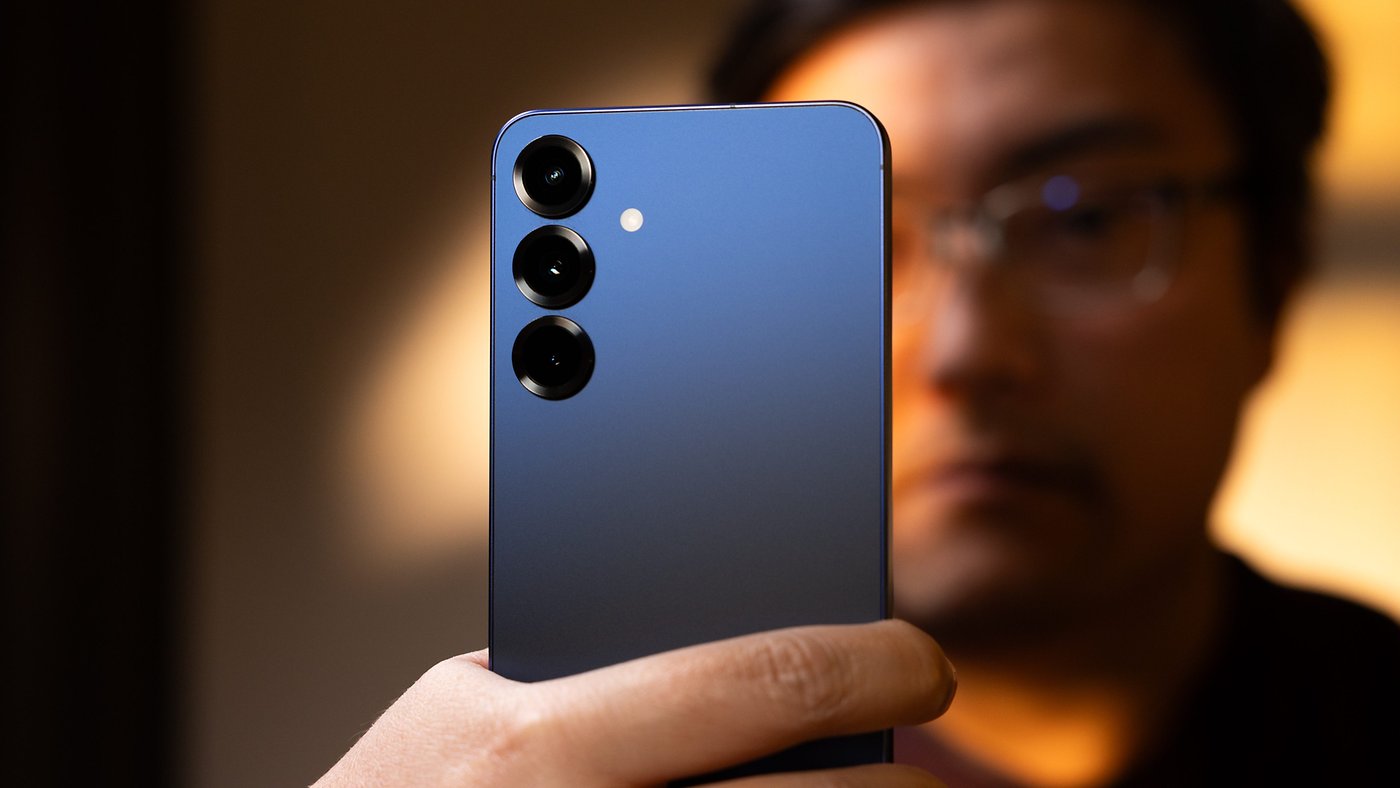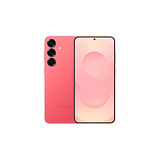Is the Samsung Galaxy S25+ Worth the Upgrade?

Samsung updated its flagship phones in 2025 with most of the changes in design and specs focusing on the bigger S25 Ultra. But what about the regular S25+? We tested the updated “standard” flagship and tell you all about its performance, cameras, battery life, and more.
Good
- Great Build quality
- Excellent display
- The best software update policy
- Good performance
- No regional SoC differences
Bad
- Upgrades feel too small
- Disappointing night photos
- Slow charging times
- No Qi2 support

Samsung Galaxy S25+: All deals
Galaxy S25+’s big display on a thin design
| Design and Build Quality | |
|---|---|
| Display |
|
| Dimensions and weight |
|
| Resistance |
|
The Galaxy S25+ features a slim body dominated by the big 6.7-inch OLED display on the front and the now traditional triple camera lenses on the back. The design is mostly inherited from the S24+, with flat edges.

Handling the S25+ is fine despite the big dimensions, helped by the fact that it features small bezels around the display. That helped make the phone slightly smaller than its predecessor, even on the 7.3 mm thinness (7.7 mm on the S24+), and also relatively light, at 190 grams (196 g on the S24+)
The button placement on the right side is within reach of the right-hand thumb or left-hand index finger, but the in-display fingerprint reader requires changing the grip to reach its position down on the screen (even if you have a short thumb), which could be improved by moving it up slightly.

Samsung sent us the blue version of the phone, and the finish on both the aluminum frame and Gorilla Glass Victus 2 on the back are impeccable, with the added bonus of hardly getting fingerprints on the back matte surface. The materials are the same as those in the previous model, just like the IP68 rating for dust and water protection.
The display uses basically the same 6.7-inch OLED panel as its predecessor, with a sharp 3120 × 1440 (QHD+) resolution, and features a variable refresh rate ranging from 1 to 120 Hz, offering both energy efficiency and smooth animations on the screen.

Brightness levels were perfectly fine outdoors, without ever being required to use the full brightness setting, even under direct sunlight. Just as important, it can be set to a very low level for using the phone in the dark.
Seven Years of Software Support for the S25+
| Software | |
|---|---|
| Operating system | |
| Update Policy |
|
Despite being late to the Android 15 party, Samsung equipped its 2025 flagships with the latest OS version. On top of that comes One UI 7, which features some interface changes after keeping mostly the same in the past 5 years.
We already mentioned in the Galaxy S25 Ultra review the most important changes, so you can skip the next two paragraphs if you already read that test. Firstly, the notification area and quick settings were separated like in other Android skins and iOS, but it can be changed in the panel settings menu.
Another change is that Bixby took a back seat to Gemini, with the AI-powered tool taking over as the default assistant in the Galaxy S25+. In the process, Google’s AI was better integrated with the Samsung tools, allowing to save notes or make appointments from almost any part of the interface.
Top-notch Performance From the S25+
| Performance | |
|---|---|
| Processor | |
| Memory | |
| Storage |
|
| Connectivity |
|
Powered by the same Snapdragon 8 Elite chip found in basically all Android flagships in 2025, the Galaxy S25+ didn’t disappoint in the performance department. In fact, the phone even outperformed its Ultra sibling in most of our tests. But it is important to note that, we couldn’t notice any difference between the two in daily usage.
Multitasking and app switching were smooth, help by the plenty 12 GB of fast LPDDR5x RAM, and we didn’t notice slowdowns or hiccups throughout the interface or the usual apps for social media, messaging, video calls, and web browsing.
| Galaxy S25+ (Snapdragon 8 Elite) |
Galaxy S25 Ultra (Snapdragon 8 Elite) |
OnePlus 13 (Snapdragon 8 Elite) |
Xiaomi 14T Pro (Dimensity 9300) |
Galaxy S24 Ultra (Snapdragon 8 Gen 3 |
Galaxy S24+ (Exynos 2400) |
|
|---|---|---|---|---|---|---|
| AnTuTu | 2,429,871 | 2,341,216 | 2,695,676 | 2,013,101 | 1,851,716 | – |
| 3DMark Wild Life Extreme Stress Test | Best loop: 7264 Worst loop: 3714 Stability: 51.1% |
Best loop: 6986 Worst loop: 3253 Stability: 46.6% |
Best loop: 8751 Worst loop: 4410 Stability: 50.4% |
Best loop: 2983 Worst loop: 2633 Stability: 88.3% |
Best loop: 5160 Worst loop: 3013 Stability: 58.4% |
Best loop: 4242 Worst loop: 2637 Stability: 62.1% |
| 3DMark Steel Nomad Light Stress Test | Best loop: 2178 Worst loop: 1408 Stability: 64.4% |
Best loop: 2581 Worst loop: 1363 Stability: 52.8% |
– | Best loop: 1132 Worst loop: 1086 Stability: 95.4% |
– | – |
| Geekbench 6 | Single: 3210 Multi: 10210 |
Single: 3187 Multi: 9947 |
Single: 3125 Multi: 9697 |
Single: 2188 Multi: 7158 |
Single: 2252 Multi: 7107 |
Single: 2131 Multi: 6676 |
In synthetic tests, the S25+ even beat the S25 Ultra, and even if the difference was within the margin of error, they were still consistent through different tests and runs.
The table above also shows how that was not the case in 2024, with the Exynos-powered S24+ clearly losing to the S24 Ultra with a Snapdragon chip. Thankfully, for the S25 series, there is no segregation between models and regions.
Gaming performance was equally flawless, with the SoC capable of handling high graphical settings at smooth framerates. The S25+ curiously even offered a more stable performance than the Ultra, with less variation between runs on the 3D Mark stress tests, without getting too hot to the touch.
Samsung S25+ Cameras: Good at Day, Meh at Night
| Camera | |
|---|---|
| Main Camera | |
| Ultra-Wide Camera | |
| Tele Camera(s) |
|
| Selfie Camera | |
| Max. Video Resolution |
The S25+ camera kit is unchanged in comparison to its predecessor: A main 50-megapixel camera with optical image stabilization and a f/1.8 aperture, a 12 MP ultra-wide with f/2.2, and a 10 MP telephoto lens with 3x zoom and a f/2.4 aperture. By default, all cameras save files at a 12-megapixel resolution, including the telephoto, curiously.

In daylight, all three cameras performed well, with sharp images and good color reproduction–at least as much as the cloudy days allowed. Images from the telephoto camera were slightly less saturated but still very usable.
Going further in the zoom range, especially on 10x magnification and beyond, results in over smoothed images, so it is better to get closer to the subject.
Photos with the S25+ at night disappointed, with a noticeable amount of noise, even with the night mode enabled, which on the other hand had the effect of smearing some textures. Photos from the main and ultra-wide camera are still usable for sharing on social media and messaging apps but don’t expect to print them.
We didn’t notice the dark bars other users reported on low-light photos, but even without that bug, it seems Samsung still has some fine tuning to do on the S25+.
When it comes to selfies, the ones taken in daylight were good, with a nice level of detail and sharpness and good subject separation in portrait mode. At night, selfies weren’t as sharp but still usable, and portrait mode had a bit more difficulty separating the different layers.
Long Battery Life on the Galaxy S25+
| Battery | |
|---|---|
| Battery Capacity | |
| Wired Charging Speed | |
| Wireless Charging Speed |
In the battery department, our experience with the S25+ was very good. The phone survived an entire day of regular use with social media, messaging, light hotspot usage, and music streaming with plenty of charge left. Lighter usage even got the phone up to two days away from the wall, but as always, your mileage may vary.
| Galaxy S25+ (4900 mAh | Samsung 45 W PD) |
Galaxy S25 Ultra (5000 mAh | Samsung 45 W PD) |
Xiaomi 14T Pro (5000 mAh | 120W ) [“Fast” option] |
Pixel 9 Pro XL (5060 mAh | 140 W USB-PD) |
Galaxy S24+ (4900 mAh | 45 W USB-PD) |
|
|---|---|---|---|---|---|
| 10 minutes | |||||
| 30 minutes | |||||
| 1 hour |
|
||||
| Full charge | |||||
| PC Mark Battery test |
Charging times, as usual for Samsung phones, were not as competitive. Supporting up to 45 W charging, the Galaxy S25+ took just over one hour to charge using a compatible adapter (model EP-T4510). But the charger doesn’t come in the box, as is becoming the norm.
The Galaxy S25+ offers both wireless charging and reverse wireless charging, but there is no support for Qi2’s magnetic attachment.
In the PCMark Battery Test that simulates a workload with the display on and counts the time between 80 and 20% charge, the Galaxy S25+ did well. Despite the 7% smaller battery compared to the rival Xiaomi 15, it had only a 4% shorter runtime while doing more work, scoring more performance points in the test.

Compared to the S24+, the Galaxy S25+ showed better efficiency all around, with both a longer runtime and more performance. It is worth noting that the test was run in the default 1080p resolution. Switching to the maximum 1440p (QHD) resolution, the S25+ had a shorter 16h04 runtime, with a slightly higher 20,996 performance score.
Should You Buy the Galaxy S25+?
The Galaxy S25+ seems like a bare-bones upgrade over its predecessor. It is nice that Samsung did not split regions with different specifications, but besides the processor, there wasn’t a significant change over the preceding S24+. So, for owners of both the S24 and S23 models, it is simply not worth the investment, especially since both generations should receive most of the features launched with the S25 family.
Of course, if you are about to renew a contract and the S25+ can be had for very cheap (or free), it is a nice phone with an excellent display, performance, and build quality. But the same can be said about basically every competing flagship phone launched in 2025.

Samsung still has some advantages that are worth considering thought, especially its big ecosystem of devices, which makes the S25+ a good option for households already invested in the Galaxy or SmartThings systems.
Samsung’s promise of seven years of software updates is still only matched by Google, making the Galaxy S25+’s lifespan longer if you like to use a device for as long as possible or gift it to a relative or friend after a few years.
But the lack of upgrades in the camera and battery departments stops us from giving a higher score to the Galaxy S25+. Maybe next year.
Where To Buy the Galaxy S25+
The S25+ is available in two storage options: 256 or 512 GB, and seven different colors–three are exclusive to the online Samsung Store. MSRP start at $1000 for the 256 GB model, with the 512 GB version priced at $1,120.
Samsung offers a trade-in bonus, and there are discounts available if you sign a contract plan with one of the major carriers. It is also possible to check for special deals on the carriers pages, as well as on the usual retailers, both online and off.
Samsung Galaxy S25+
To device database



